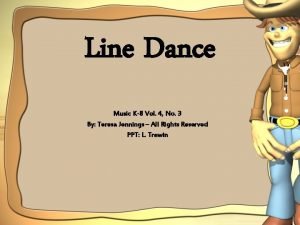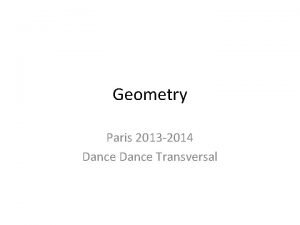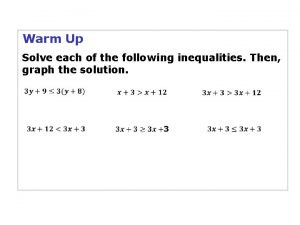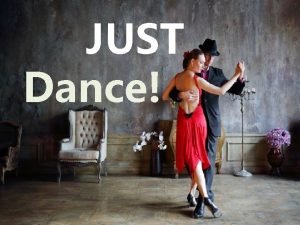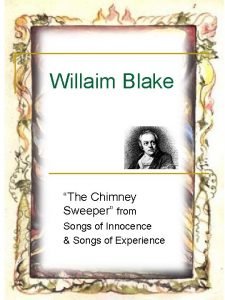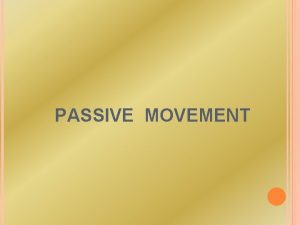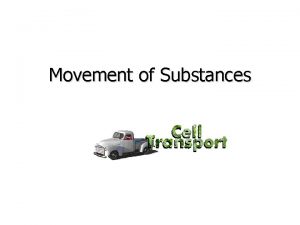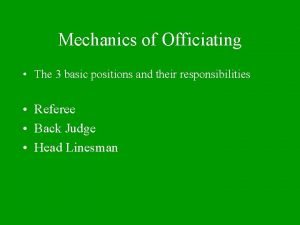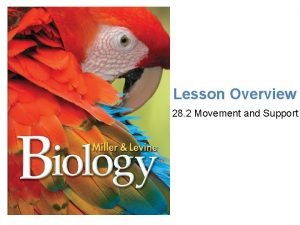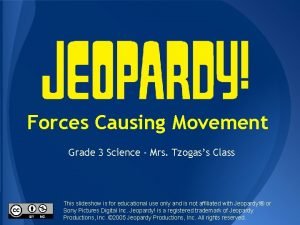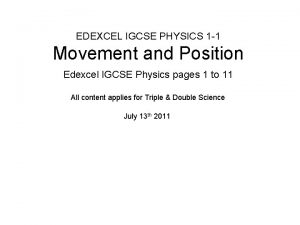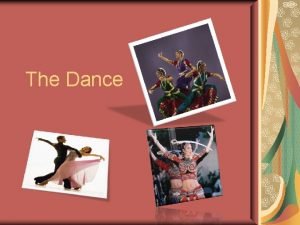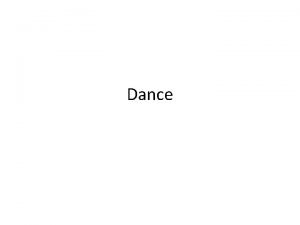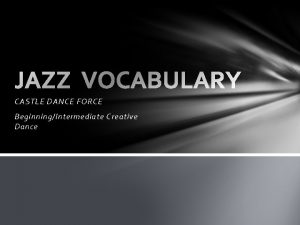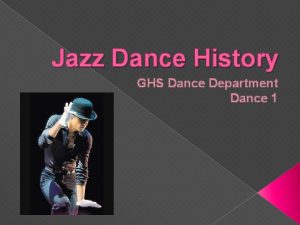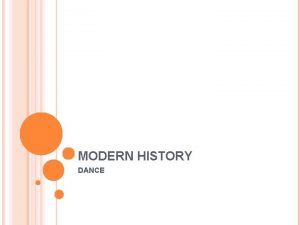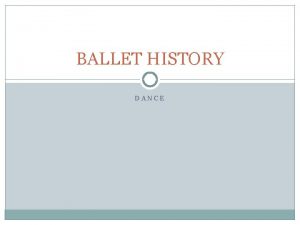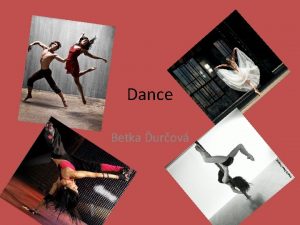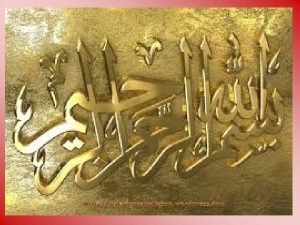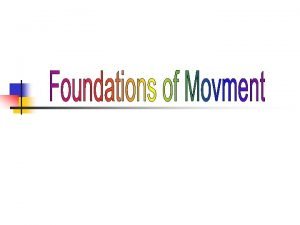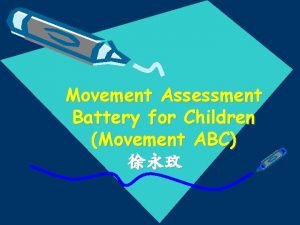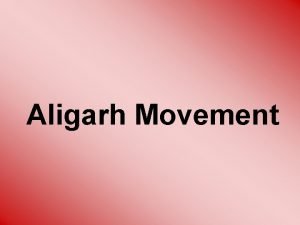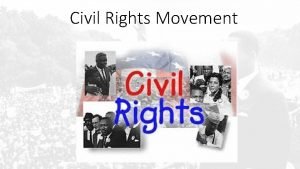Dance What is Dance Dance and Movement What


















- Slides: 18

Dance

What is Dance?

Dance and Movement • What is the difference between everyday movements and dance? • When does movement become dance? Movement becomes dance when the elements of dance (space, time, and force) are intentionally incorporated.

SPACE • Pathways - curved lines, straight lines, zigzags, circles, figure-eights, and many more • Shape - large, small, rounded, and angular • Level - high, medium, low or on the floor • Direction - forward, backwards, diagonally, sideways

TIME • TEMPO - fast, slow, moderate • DURATION - short, long • BEAT - pulse of the music

FORCE the use of energy while moving • QUALITY-smooth, sharp, round, free, flowing • ENERGY-weak, strong • WEIGHT-heavy, light, suspended collapsed

All dance movements can be labeled as locomotor or nonlocomotor. NONLOCOMOTOR-movements that do not change location LOCOMOTOR-movements that travel

Locomotor Movements Dancers using locomotor movements may walk, run, skip, hop, jump, slide, leap, or gallop. These movements may be high (possibly indicating joy), medium, or low (possibly indicating sadness. )

Non-locomotor Movements Dancers are using non-locomotor movements when they stay in one place but bend, stretch, twist, or swing their body.

How is a dance created? Dances are created by combining locomotor and nonlocomotor movements. A dance, like a book, has a beginning, a middle, and an end.

Dance has 3 main forms • ceremonial (religion, celebration, ritual) • recreational (folk, social dancing, aerobic dance) • artistic (ballet, modern, narrative, tap, lyrical).

Culture and Dance • Nearly all cultures incorporate dance in some way. • Dance is a major component of many cultures. • Dance is often used to communicate or celebrate.

Some more about dance & culture • Cultures use dance in ways that are both social and personal. • What are some examples of culture and dance you can think of? How do those cultures use dance?

Dance is also representative of time periods What time period do you think of when you hear: *Charleston, *Swing, *Disco, *Break dancing, or *Hip Hop? Something to think about… How are the dances of these time periods related to the politics of the time?

Dance in History • • • Dance has played an important function in many cultures throughout history. Dance styles, costumes and music often reflect the political climate of the time. Dances such as the “Locomotion”, “Macarena”, and even the “Chicken Dance” all perform a function in our society – they create a “group” of dancers having fun!

Is there anything else I should know? Dance allows the dancer or choreographer to communicate their ideas, thoughts, and feelings through movement. These movements are structured and repeatable, in that they can be taught to others.

Dance is often used to tell a story Like a story or a book, each dance has a beginning, middle and an end. Dance is made up “movement materials”, connected into “phrases” and put together into a complete dance.

Bibliography Resources used for this presentation include: • KET’s Dance. Sense, • an original Power Point presentation created by Anna W. Martin (sent to JCES staff by HSE Pam Clemons) • Microsoft Office Clip. Art files
 Dance dance dance in the freedom we know
Dance dance dance in the freedom we know Control tower light signals
Control tower light signals Which of the following is an axial movement
Which of the following is an axial movement Electric slide line dance music
Electric slide line dance music Everybody dance and sing line dance
Everybody dance and sing line dance Non locomotor movements dance
Non locomotor movements dance Ghost dance movement apush
Ghost dance movement apush Repretory
Repretory Dance dance transversal
Dance dance transversal Joan needed $100 to buy a graphing calculator
Joan needed $100 to buy a graphing calculator Dance as a hobby
Dance as a hobby Willaim blake
Willaim blake Romeo and juliet gestures and movement
Romeo and juliet gestures and movement Relaxed passive movements
Relaxed passive movements The movement in and out of cells
The movement in and out of cells Mechanics of officiating
Mechanics of officiating Support control and movement lesson outline
Support control and movement lesson outline Grade 3 forces causing movement
Grade 3 forces causing movement Movement and position physics
Movement and position physics




